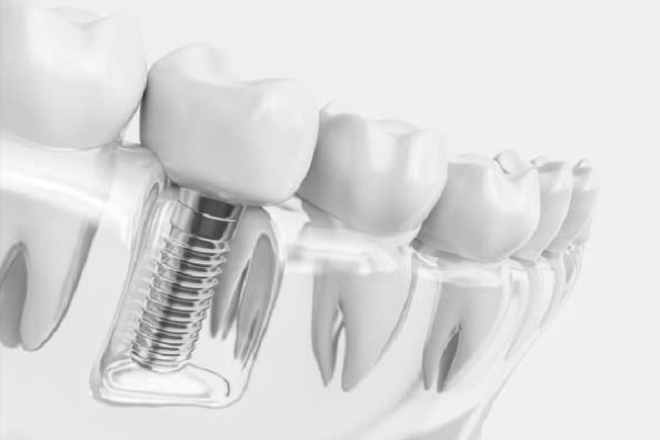Most dental implants use posts and anchors made of titanium, a strong, biocompatible metal. However, more and more people are turning to zirconia implants. These implants were approved by the Food and Drug Administration in 2011, though titanium implants have been used since the 1980s.
What is Zirconia?
Zirconia is the crystalline form of the element zirconium and is technically zirconium dioxide, or ZrO2. Zirconium is what’s known as a transition metal, or a metal that easily forms compounds with other elements. For example, there are three types of zirconia used in dentistry. They’re yttrium cation-doped tetragonal zirconia, or YSZ polycrystals. This is zirconium oxide stabilized at room temperature with yttrium oxide, or YzO3. There’s also alumina toughened by zirconia and magnesium cation-doped partially stabilized zirconia.
Like titanium, zirconia is biocompatible, hypoallergenic and bone can fuse into it. This is crucial when it comes to dental implants, because the post is installed in the jawbone and bone must grow around it to make it secure. Though zirconia implants haven’t been studied as extensively as titanium implants, there are signs that bone fuses even more completely to zirconia than it does to titanium.
One difference between titanium and zirconia dental implants is that titanium implants usually have a post and an abutment that is placed on top of it. In turn, the abutment holds the crown. With zirconia, the post and abutment come as one piece since zirconia does have a tendency to crack more often than titanium. Dental technicians are trying to develop zirconia dental implants that come in two pieces. However, the benefit of having a one-piece implant may lower the risk of bacterial infection and plaque.
Titanium vs. Zirconia
Because titanium implants come in two pieces, they are easier to customize for the patient and place in the jaw than implants made of zirconia. On the other hand, sometimes a gray line can be seen along the ridge of the crown with a titanium abutment. This can be problematic when it comes to the patient’s front teeth. The zirconia post and abutment are close to the color of the patient’s tooth and don’t show a gray line through the gums. Thin gum tissue that can show a gray line from a titanium abutment is one of the reasons a dentist would recommend that their patient have a zirconia implant.
Zirconia also has the benefits of low porosity and high density. Its compressive strength is also impressive, and dentists have found that its mechanical strength rivals that of stainless steel. Another drawback of zirconia implants is that the post and abutment need to be load-free while the jaw heals around it. This means that the dentist might not be ale to place even a temporary crown over it, which can be problematic.
Cost Considerations
Zirconia costs more than titanium, and most dental health insurers don’t cover the cost of any type of dental implant. A titanium implant costs between $300 and $500 and a zirconia implant can cost between $500 and $600, and this doesn’t count the surgery itself, lab work, computer imaging or follow-up visits. Still, implants made from zirconia are an exciting new development in the field of dentistry.




